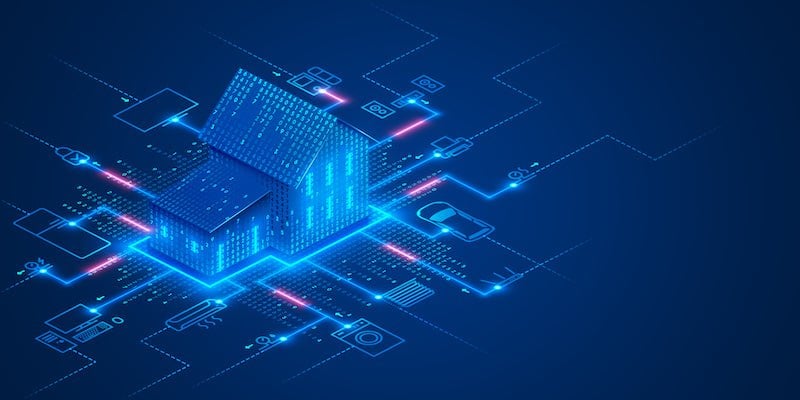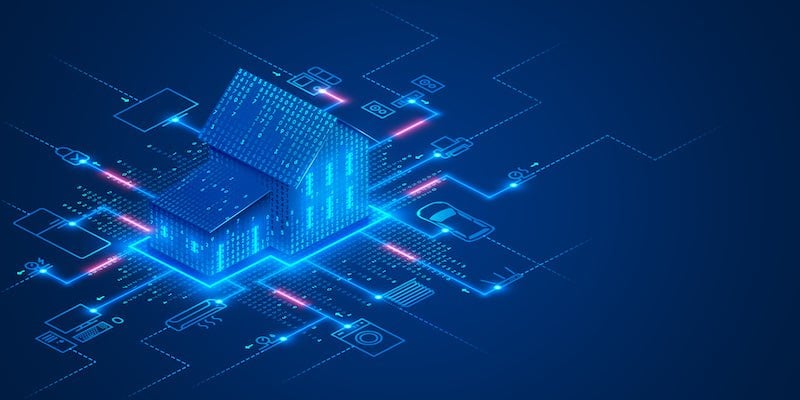How Matter Will Impact The Smart Home Industry

Building a smart home provides convenience, flexibility, and security while freeing up time to focus on other tasks. The goal of a smart home is to have everything connected and working seamlessly with the push of a button. However, this hasn’t always been the case based on the options we’ve had on the market.
With so many options for smart home automation, there hasn’t been one cohesive integration that connects them all. This has left smart home users switching between Google home products, Amazon Samsung, and Apple’s Siri. Using different smart home devices and struggling to integrate them with Bluetooth, Wi-Fi, and other connectivity technologies has been a hassle. Dealing with a plethora of different smart home apps and disparate systems that don’t communicate leaves many smart home hopefuls wondering if it's even worth all of the trouble.
With the introduction of Matter, a new standard in smart home tech, we just might have the connecting link we’ve been waiting for. With Google, Amazon, Samsung, and Apple on board, Matter is setting the stage to integrate a variety of different smart home devices and platforms. The end result is one, cohesive solution that makes smart homing a breeze.
Matter, Explained
Matter is an open-source, smart home connectivity protocol that was introduced in 2019 by Project Connected Home Over IP (Project Chip). It's a connectivity tool that is now managed by the Connectivity Standards Alliance (CSA). Matter is a royalty-free solution supporting interconnectivity between smart home devices and platforms.
The Connectivity Standards Alliance has more than 400 companies as members, and 280 are directly involved with Matter. With so many companies on board, there will be many different Matter-compatible devices to choose from to create the perfect smart home setup.
Matter leverages existing technologies which include Bluetooth, Wi-Fi, Thread, and ethernet, to enable communication between different smart home systems. This all works without the need for a cloud, and provides a smart home ecosystem whose operation is internet independent.
How Does Matter Work?
Matter works seamlessly to integrate separate devices and platforms so that you can run one cohesive smart home without the need for several different applications and voice assistants. Device manufacturers will add the Matter logo to compatible devices. Once Matter has been set up, users can purchase any Matter-enabled device and use the voice assistant of choice to control all devices. From Amazon’s Alexa to Apple’s Siri, with Matter, there will be one singular platform for seamless integration.
That means you can purchase a Matter lighting set and set it up with Google Assistant or any other voice directive platform without any trouble. This makes it faster and easier to create the ideal smart home using any Matter-compatible device.
Matter runs without the need for an Internet-based cloud connection. Instead, it uses Thread for lower-power devices like sensors and lighting. It runs through ethernet or Wi-Fi for devices that use more bandwidth, such as cameras.
Which smart home devices work with Matter?
The Matter protocol is currently included in every major smart home platform, such as Google Home, Samsung SmartThings, Amazon Alexa, and Apple Home. Each of the devices offered by these major platforms will be able to speak the same language. Some of the brands may offer individual features that others don’t, and that would require an extra Works With certification for those devices.
Matter 1.0 is the first specification available, and this one supports a limited number of categories for smart home devices. This includes devices with functions such as lock and unlocking, turning off and on, and motion, or no motion. More advanced support for features such as adaptive lighting or smart plug energy management is not yet available. However, these features can be accessed via the smart home platform of choice if they are Matter-supported.
Currently, Supported Gadgets Include:
- Light switches and light bulbs
- Smart plugs
- Smart locks
- Smart shades and blinds
- Safety sensors
- Security sensors
- Garage door controllers
- Thermostats
- HVAC controllers
- Wireless access points
- Television and streaming video players
Matter was officially released in the Fall of 2022, and since then, many different companies have been creating Matter-supported devices. These include Meross Nanoleaf, Eve, Philips Hue, Toya, and Comcast. When purchasing devices, find the Matter logo first to make sure that the device or accessory is Matter compatible.
To use Matter devices in the home, it's necessary to have one primary Matter controller as well as a smart home application. Matter controllers can control any matter-enabled device from any smart home brand.
Creating A More Responsive Smart Home
With Matter as the leading smart home standard of the future, automation is simplified, and interoperability is enhanced. A more responsive smart home is now possible with Matter. Smart home users can enjoy all of their devices working in harmony without the confusion of managing disparate systems. Using just one voice command to speak to all different smart home devices is now a reality that promises to bridge the smart home automation gap.
Google Nest products enjoyed a Matter firmware update in 2022, and Apple’s entire product line is now Matter supported. Amazon currently has smart plugs, smart switches, and smart bulbs that are Matter enabled.
Matter: The Interconnected Smart Home Solution
With the major brands on board and many more companies adding Matter compatibility to their smart home product lineup, the possibilities continue to expand. Creating a more responsive and cohesive smart home is now a closer reality. Matter is the dynamic and unique, new open-source standard for smart homes that is single-handedly solving the previously faced interoperability challenges.
With so many smart home devices and platforms, having one cohesive connector brings all of our IoT devices together. Matter promises to simplify the smart home ecosystem while offering the best possible experience.







































.jpg?height=200&name=type-entertainment-complex-the-popular-resort-with-pools-and-water-parks-in-turkey-with-more-than-5-million-visitors-a-year-amara-dolce-vita-luxury-hotel-resort-tekirova-kemer_146671-18727%20(1).jpg)


